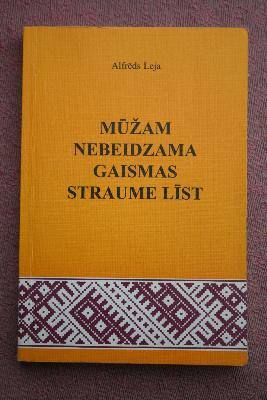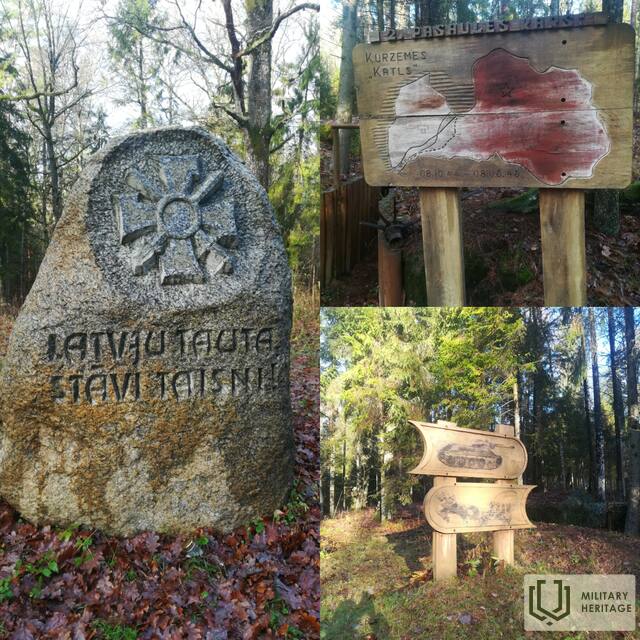Poeto Alfredo Lėjos prisiminimai
Buvusio aivzvīgiko Alfrēdo Lėjos prisiminimai iš knygos „Amžinai krenta nesibaigianti lietaus srovė“.
Aizvīkiai ir jų gyventojai taip pat labai nukentėjo Antrojo pasaulinio karo supervalstybių malūnuose.
Alfredas Ley savo memuaruose rašo:
„Rusai įžengė į Latviją 1944 m. liepos 18 d. netoli Ščuunės. Liepos–rugsėjo mėnesiais į oro pajėgas buvo pašaukti 1927 ir 1928 m. gimę jaunuoliai. Tai buvo dar viena vokiečių išdavystė prieš Latvijos žmones. Tik spartus rusų puolimas į vakarus iš esmės išgelbėjo Aizvykių jaunuolius, tarp jų ir šių eilučių autorių, nuo tarnybos vokiečių armijoje.“
Daugelis mūsų klasiokų liko visam gyvenimui gulėti svetimų kraštų mūšio laukuose, nesuprasdami, už ką paaukojo savo gyvybes. Daugelis dingo Sibiro platybėse ir Gulago lageriuose su Tėvynės svajone galvose. Daugelis vis dar gyvena svetimose žemėse, kur yra įleidę per gilias šaknis, kad galėtų jas išrauti ir grįžti į Aizvikus, kur jų niekas nebelaukia.“
LEJA Alfredas – pedagogas, sportininkas, publicistas.
Gimė 1927 m. rugpjūčio 24 d. Polių miestelyje, Kalėtų valsčiuje. Mokėsi Aizvykių nepilnoje vidurinėje mokykloje, baigė Kazdangos žemės ūkio technikumą (1948 m.) ir Valstybinį kūno kultūros institutą (1958 m.).
Jis parašė šias knygas: „Jaunimas, eikime pasivaikščioti“ (1962), „O, norėčiau turėti Dalinio kojas“ (I tomas, 1997, II tomas, 2004), „Kaip gražu Kazdangoje“ (1999), „Sporto draugijos Vārpos istorija“ (1999), „Nesibaigiantis šviesos srautas krenta amžinai“ (2000), „Mokyklos direktoriaus dienoraštis“ (2001), kartu su Andriu Zankovskiu – „Nors mano plaukuose šerkšnas“ (2002), „Kadaise buvo Aizvykių parapija“ (2004), „Koks rojus Kuržemėje“ (2007), „Kazdangos parkas ir jo dievas“ (2008), „Su liepsnojančiomis širdimis“ (2009), „Aizputės sportas“ (2009). Jis dalyvavo rengiant knygas „Kūrybinis darbas“ (1967 Maskvoje), taip pat leidžiant „Latvijos sporto istoriją“ (1994) ir „Latvijos olimpinių žaidynių istoriją“ (2003).
Apdavanojimai: Tarptautinė Ludos Bērzinio premija (2001, 2003, 2005, 2007, 2009), SSRS kūno kultūros nusipelnęs asmuo (1957), Visasąjunginės žemės ūkio parodos aukso medalis (1955, 1957), Latvijos SSR nusipelnęs treneris (1962), Žemės ūkio nusipelnęs asmuo (1963), Liaudies švietimo nusipelnęs asmuo (1989), Trijų žvaigždžių ordino auksinis garbės ženklas (1996), Latvijos sporto veteranų sąjungos garbės ženklas (1997), Latvijos sporto administracijos garbės ženklas (1998), Latvijos olimpinio komiteto garbės ženklas (2003), Latvijos valstybės gynybos fondo Lāčplēsio kavalieriaus garbės ženklas (2003), Tėvynės premijos laureato, pasaulio rekordininko Jānio Dalinio 100-ųjų metinių stalo medalis (2004), Latvijos sporto veteranų sąjungos bronzos medalis Sporto šlovės medalis (2005) ir sidabro medalis (2007). Kazdangos parapijos apdovanojimas Garbės iždininkas (2005 m.).
Įtrauktas į Latvijos SSR Valstybinio agropramonės komiteto Mokymo metodinio kabineto išleistą brošiūrą „Tegul kiekvienas pasėja žemėje, kiek įmanoma“ (1990 m.) ir į 24 Latvijos pedagogų, pripažintų Švedijos istorijos muziejaus organizuotame konkurse – tarptautiniame projekte „Baltijos jūros šalių mokytojų biografijos“, išleistame švedų, suomių, estų, latvių kalbomis, sąrašą. Apdovanotas valstybės stipendija už viso gyvenimo indėlį į Latvijos sporto plėtrą.
http://vardnica.aizpute.lv/23-personas-l/351-leja-alfreds
Susijusi laiko juosta
Susijusios vietos
Antrojo pasaulinio karo liudijimai Aizvykių parke
Aizvykių dvaro parkas yra Aizvyčiuose, Gramzdos valsčiuje, vos už kelių kilometrų nuo Lietuvos sienos.
Aizvykių parke vis dar aiškiai matomos Antrojo pasaulinio karo bunkerių ir apkasų vietos. Vienas iš ginklų tipų buvo raketų paleidimo sistema „Katyusha“. Kelios tokios raketų paleidimo sistemos Aizvykių parke buvo ir pasibaigus Antrajam pasauliniam karui, ir šios vietos (kaponieriai) yra aiškiai matomos gamtoje.
Šis unikalus miško parkas, apipintas paslaptimis ir legendomis, buvo įkurtas XIX a. pabaigoje kaip Aizvykių dvaro parkas, kai dvaro baronas fon Korfas netoliese esančią kalvotą žemę apsodino pušų ir eglių mišku. Vėliau 40 hektarų plote buvo įrengti pėsčiųjų takai, pasodinta ir kitų rūšių medžių, įkurtas fazanų sodas.
Be vaizdingų miško peizažų, parke taip pat yra medinių pasakų ir legendų personažų, taip pat akmens skulptūrų, kurios keliautojams pasakoja apie Aizvykių istorijos įvykius ir žymi kultūrines bei istorines vietas. Parke taip pat yra Žalioji klasė.
Norint geriau pažinti Aizvykių dvaro parko kultūrinį ir istorinį paveldą, rekomenduojame pasinaudoti gido paslaugomis.







